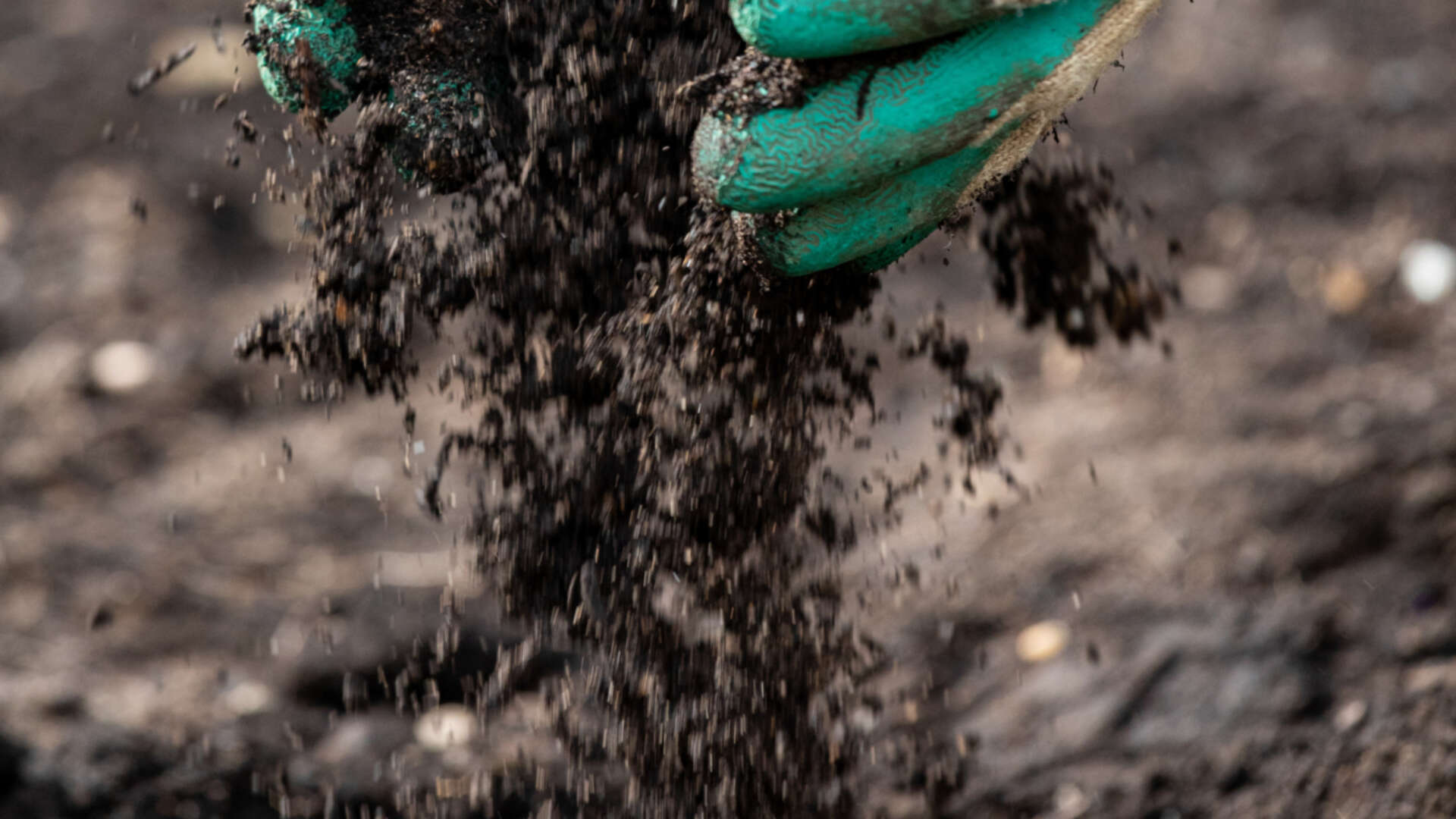The interconnected features of a healthy soil

A healthy soil is the gardener’s most important asset. But how do we judge whether our soil is in tip-top condition or is need of a bit of care?
Too often, we only focus on the nutrient content of the soil. We might even send it off to have it tested and be told how much nitrogen, phosphorus and potassium it contains. We put our trust in it, because we have a report sheet with some numbers and perhaps some comments saying ‘low’, ‘moderate’ or ‘good’. But these numbers are a simplification as they are influenced by the other key players: physical structure and biology.
These soil features are all connected. Good soil structure should consist of small-sized aggregates and a range of pore sizes that allows water and nutrients to move around. This structure is held partly in place by organic matter and also the hard work of all the biological life that burrow to maintain all the tunnels and pores. Without either of these, the structure collapses quite quickly.
But there are a number of checks that you can do in your own garden that indicate the state of these connected features without needing to send them off to a lab.
"Plenty of organic matter is the magic key to a soil with good structure and healthy levels of biological life."
Organic matter levels
Plenty of organic matter is the magic key to a soil with good structure and healthy levels of biological life. And there are two simple observations that will give you an indication as to your organic matter levels. Firstly, take a spade full of the soil, and observe its colour. A soil high in organic matter is a rich, dark coffee colour, whereas a soil with low organic matter will be the colour of pale or weak tea. Then take a teaspoon of soil and place it in a jar of water and shake. Leave for 15 minutes, and you should see any organic matter as small pieces of detritus floating on the top.
Surface appearance
Observe the appearance of the surface. Is it crusty or cracked? Sometimes the surface particles bind together very tightly forming an impermeable barrier. This is commonly caused by the pounding action of rain on bare soil. A poorly structured soil surface is often an indication of low organic matter levels and little biological life. Mulching the soil, adding organic matter or growing a green manure plant over winter will all help you restore a soil surface that is able to absorb moisture and air once again.
Earthworms
Earthworms are good indicator of a healthy soil teaming with biological life. On a day when the soil has typical moisture content, take a cube (20cm x 20cm x 20cm) of soil, then break up and count the number of earthworms. There should be at least 20 worms in this volume of soil, with more than one type present. There are leaf litter dwellers, soil dwellers and deep burrowers – all of different sizes and colours. Adding organic matter and keeping the amount of digging down to a minimum will help to boost your worm population.
Aeration
Poor soil aeration is often a consequence of poor soil structure and low organic matter levels. Firstly, take a slice of the soil and observe it. Does it have any blue or grey mottling? This colouration is an indication of chemical changes (reduction in iron and copper compounds) in the soil due to it being starved of oxygen when aeration levels are low. Now give the soil a sniff! Any slightly ‘off’ smells, especially sulphurous smells are an indication that aeration could be improved. Again organic matter is your friend – it will help open out the soil structure and feed the life that helps to improve soil structure. Growing some deep fine-rooted green manures such as grazing rye will also help to break up any hard layers.
Tying it all together
Maintaining good organic matter levels in the soil is key to achieving a healthy soil that is well-aerated, has good structure and levels of biological life. Estimates suggest that UK arable soils may have lost up to 40-60% of their organic carbon due to intensive farming.* Luckily, gardeners seem to have fared rather better than large scale agriculture with a study of 200 allotment sites showing soils managed by gardeners had on average 250% higher levels of soil carbon than surrounding arable or horticultural land.
So let’s keep up the good fight, and make sure we look after our soil’s organic matter. Three steps you can take are:
1. Add plenty of compost
2. Reduce the amount of digging
3. Growing a green manure to protect the soil over winter.
*Dobson, M. C., Crispo, M., Blevins, R. S., Warren, P. H., & Edmondson, J. L. (2021). An assessment of urban horticultural soil quality in the United Kingdom and its contribution to carbon storage. Science of the Total Environment, 777, 146199.
